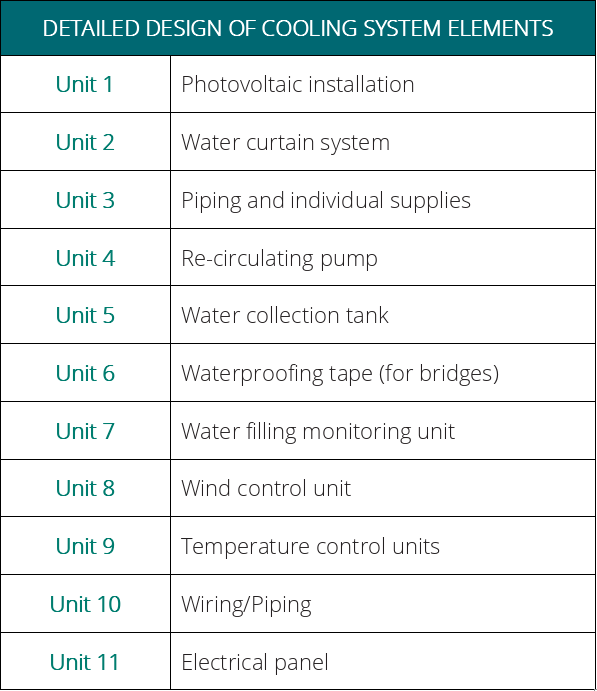PROJECT RESULTS
Work Package 1
The objective of Work Package 1 is to delineate the current technological situation in the field of cooling methods of photovoltaics, as well as to conduct an extensive patent landscape analysis of cooling systems at international level.
The technology mapping demonstrated the existence of various PV cooling technologies and methods, as follows.
| Floating tracking concentrating cooling (FTCC) | Hybrid solar photovoltaic/Thermal (PV/T) | PV panel cooled by transparent coating (photonic crystal cooling) |
| Hybrid solar Photovoltaic/ Thermal PV/T system cooled by water spraying | Phase-change materials (PCM) used to decrease the operating temperature of solar panels | Hybrid solar Photovoltaic/Thermal system cooled by forced air circulation |
| Hybrid solar Photovoltaic/Thermoelectric PV/TE system cooled by heat sink | PV panel with water immersion cooling | Hybrid Photovoltaic/Thermal Collector system |
Furthermore, the patent landscape analysis yielded interesting results regarding field developments, key players and competition.



Work Package 2
The scope of the 2nd Work Package is to define the specifications that must be satisfied by the new cooling system and to carry out the basic design of the system. The basic design will provide the main design parameters for the individual subsystems (for example: tanks, pipes, nozzles, etc.). The research results of the Work Package 2 are presented in the following table.



Work Package 3
The objective of Work Package 3 is the theoretical and experimental investigation of the system. In the context of this Work Package, the mathematical background of the PVBOOSTING system under study was presented, in order to understand the phenomena that take place and conduct the modelling of the critical processes that are essential for the further analysis and parametric study of the system. Besides, an appropriate experimental setup and a system for recording/storing the measurements were developed in order to experimentally investigate the cooling system of the photovoltaic panels.

Work Package 4
The Work Package 4 involves the detailed design of the new cooling system. For this purpose, a sensitivity analysis was carried out, through computer simulations, implementing the mathematical models developed in the previous stage of the research. The results of the analysis were used for the detailed design of the system. The following table presents the main components of the system, for which the technical details and operational parameters were identified.

Work Package 5
In the framework of Work Package 5, the cooling system is constructed and integrated into the photovoltaic installation. Individual activities that took place include the supply of the necessary electromechanical equipment, assembly of the materials and the development of special structures (e.g. tanks).


In addition to the above, the activities of Work Package 5 included the publication of a scientific paper entitled "Increasing the efficiency of a photovoltaic generator through surface water film flow". The paper was published at the 12th National Conference on Renewable Energy Sources, which took place in Thessaloniki in April 2021.
Work Package 6
The objective of Work Package 6 was the operation of the photovoltaic installation, into which the new active cooling system has been integrated. The ultimate goal of the research activities was the monitoring of the operation, so as to ensure the functionality of the individual systems and the photovoltaic installation as a whole. In this context, the efficiency and effectiveness of the new technology were evaluated in terms of (technical – economical) sustainability and subsequently suggestions for future improvement/further research were made.
Last but not least, the project team organized a seminar/event on December 23rd, 2021 with a view to disseminating project’s results.





Operational Programme “WESTERN GREECE” 2014-2020
With the co-financing of Greece and of the European Union
